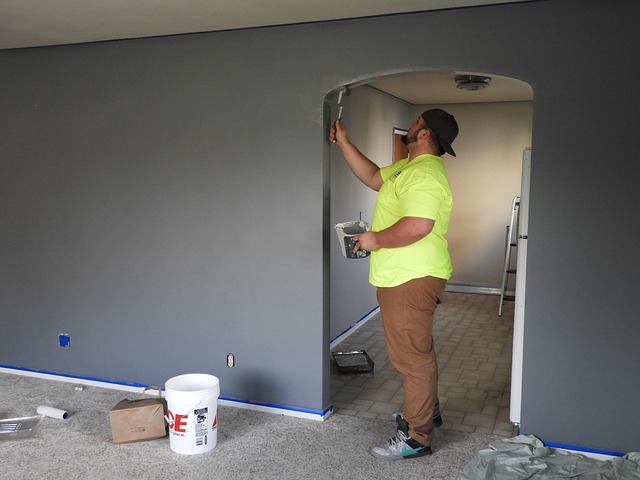
Are you looking to revamp your living space and create a visually stunning interior? Look no further.
In this article, we will explore the 12 eye-catching elements of effective interior design. From furniture arrangement to lighting options, color schemes to plant integration, we will delve into the intricate details that make a space truly remarkable.
Whether you are a design aficionado or simply seeking inspiration, this guide will provide you with the knowledge and creativity to transform any room into a work of art.
Furniture Arrangement
Furniture arrangement plays a pivotal role in creating a cohesive and functional interior design. It is not just about placing furniture randomly; rather, it involves careful consideration of the space, the focal point, and the traffic flow.
The focal point serves as the anchor of the room, drawing attention and setting the tone for the space. By arranging furniture around the focal point, whether it's a fireplace, a window with a scenic view, or a stunning piece of artwork, you create a sense of balance and harmony.
Additionally, the traffic flow should be taken into account to ensure that there is enough space for movement and that furniture placement does not impede the natural flow of the room.
Proper furniture arrangement can transform a space, making it both aesthetically pleasing and functional.
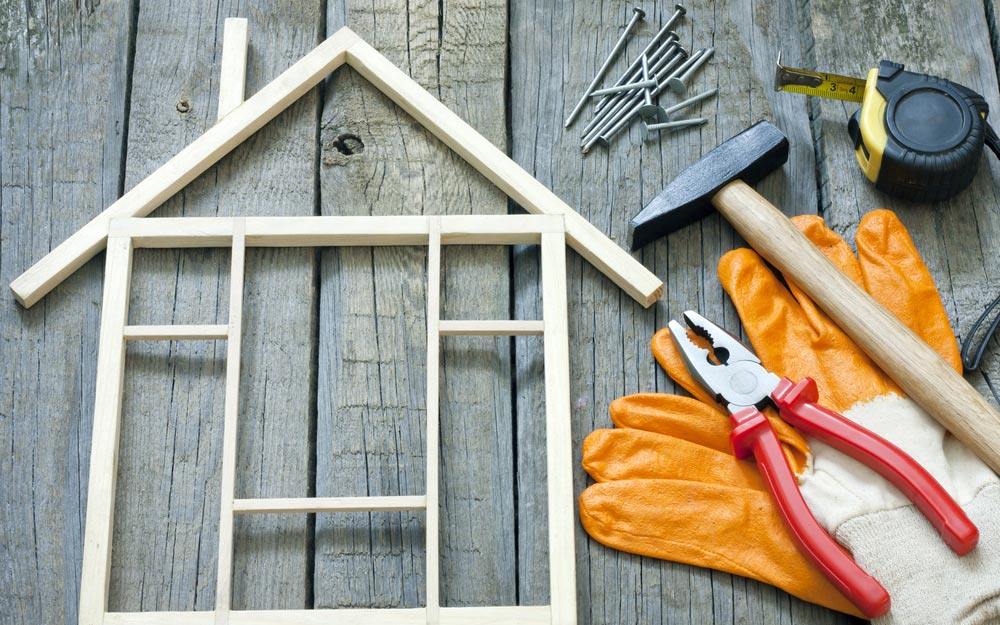
Wall Decor
When it comes to wall decor, there are numerous options that can make your space visually appealing. Colorful artwork is a popular choice as it adds vibrancy and personality to a room.
Additionally, wall decor can also serve a functional purpose, such as using shelves or hooks to display items or organize belongings.
Lastly, statement walls offer a unique way to make a bold design statement by using bold patterns, textures, or materials to create a focal point in the room.
Colorful Artwork Options
One option to add vibrant and visually appealing elements to interior design is by incorporating colorful artwork as wall decor. Colorful abstracts are a popular choice for those seeking to infuse their space with energy and creativity. Abstract art allows for the freedom of interpretation, allowing each viewer to connect with the piece in their own unique way.
Gallery walls are another innovative way to display colorful artwork. By arranging a collection of different-sized frames and artwork, a dynamic and eclectic display can be created. This approach allows for the exploration of various themes, styles, and colors, resulting in a visually captivating focal point.
Whether it's a single bold statement piece or a curated gallery wall, incorporating colorful artwork as wall decor adds personality and flair to any interior design scheme.
Functional and Stylish
The use of functional and stylish wall decor is essential in enhancing the overall design and functionality of a space. Wall decor not only adds visual interest but also serves a practical purpose by optimizing the available space.
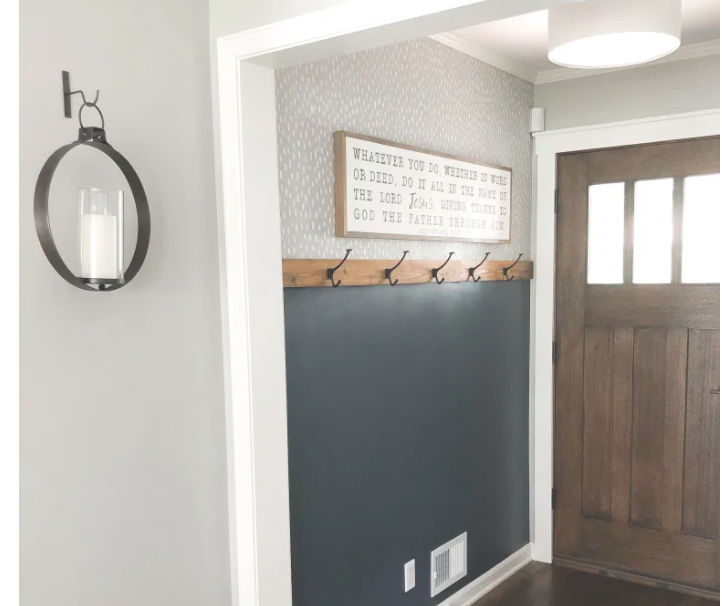
Here are four ideas for incorporating functional and stylish wall decor:
- Floating shelves: These versatile shelves not only provide storage but also act as a decorative element, allowing you to display your favorite items or books.
- Wall-mounted hooks: Perfect for organizing coats, hats, and bags, wall-mounted hooks are both practical and visually appealing.
- Mirrors: Not only do mirrors create the illusion of a larger space, but they also reflect light, making the room feel brighter and more open.
- Wall art with hidden storage: Opt for wall art that doubles as storage, such as a wall-mounted cabinet or a panel with hidden compartments. This multi-functional design is perfect for small spaces.
Statement Wall Ideas
Continuing with the discussion of functional and stylish wall decor, let's now delve into the captivating world of statement wall ideas.
When it comes to creating a visually striking interior, accent walls play a crucial role. These walls, often adorned with unique materials, serve as the focal point of a room and add a touch of personality and flair. From reclaimed wood planks to textured wallpapers, the options are endless.
Incorporating natural stone, such as marble or slate, can create a luxurious and elegant statement wall. For those seeking a more industrial look, exposed brick or concrete walls can add a raw and edgy vibe to any space.
Whether you opt for vibrant colors or subtle patterns, statement walls are a powerful way to make a lasting impression and infuse your living environment with character.
Lighting Options
Exploring various lighting options is essential in creating an effective interior design. Lighting not only illuminates the space but also sets the mood and enhances the overall aesthetic.
Here are four lighting options to consider:

- Natural lighting: Utilize windows, skylights, and glass doors to maximize the entry of natural light. This creates a sense of openness and brings a refreshing ambiance to the space.
- Ambient lighting: Install overhead fixtures or recessed lights to provide a general, even illumination throughout the room. This type of lighting helps create a warm and inviting atmosphere, perfect for relaxation and socializing.
- Task lighting: Incorporate task-specific lighting, such as desk lamps or under-cabinet lights, to illuminate work areas and enhance functionality. This ensures proper visibility for activities like reading, cooking, or working.
- Accent lighting: Use spotlights or track lighting to highlight specific architectural features, artwork, or decorative elements. Accent lighting adds depth and visual interest, drawing attention to focal points within the space.
Color Schemes
To complement the lighting options, selecting the right color scheme is crucial in achieving an effective interior design. Color psychology plays a significant role in creating a desired atmosphere in a space. Different colors evoke different emotions and can influence the mood of the occupants. For example, warm colors like red and orange are associated with energy and stimulation, while cool colors like blue and green promote relaxation and calmness. A well-thought-out color scheme can enhance the overall ambiance and functionality of a room.
Incorporating accent walls is another popular way to add visual interest and depth to a space. By painting one wall in a bold or contrasting color, it becomes a focal point that draws attention and adds personality to the room. Accent walls can be used to highlight architectural features or create a statement piece. When choosing colors for accent walls, it is important to consider the overall color scheme and ensure that the chosen color complements the rest of the room.
Room Themes
When it comes to interior design, room themes play a crucial role in creating a cohesive and visually appealing space.
The choice of color scheme can greatly impact the overall theme, whether it's a bold and vibrant palette or a serene and calming one.
Additionally, the layout and arrangement of furniture can further enhance the chosen theme, allowing for a harmonious and functional space.
Color Scheme Impact
The color scheme of a room has a significant impact on its overall theme and atmosphere. Color psychology plays a crucial role in interior design, as different colors evoke different emotions and moods. Here are four ways in which the color scheme can impact the room's theme:
- Mood enhancement: Warm colors like red and orange can create a cozy and inviting atmosphere, while cool colors like blue and green can promote relaxation and tranquility.
- Theme reinforcement: The color scheme can reinforce the desired theme of the room. For example, a beach-themed room can incorporate shades of blue and sandy neutrals.
- Visual interest: Using a complementary color scheme or adding an accent wall can add visual interest and make a room more dynamic.
- Personal expression: The color scheme allows individuals to express their personality and preferences. Bold and vibrant colors can showcase a lively and adventurous spirit, while muted tones can convey a sense of calm and sophistication.
Furniture Layout Choices
One important aspect to consider when creating room themes is the choice of furniture layout. Furniture placement plays a crucial role in determining the overall look and feel of a space. The way furniture is arranged can greatly impact the functionality and flow of a room.
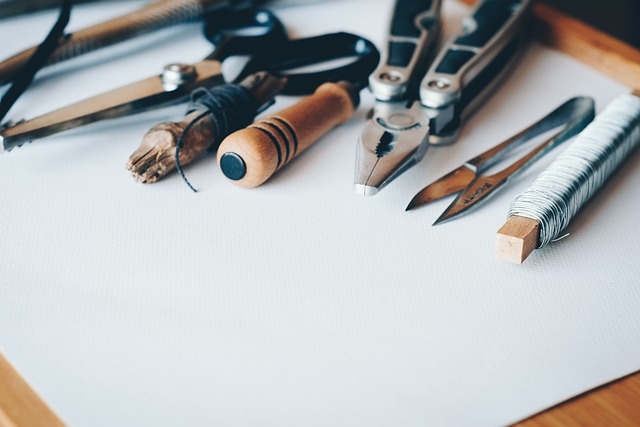
It is essential to carefully consider the room configuration and the purpose of the space before deciding on the furniture layout. A well-designed furniture arrangement can create a sense of balance and harmony, while a poorly planned layout can make a room feel cramped and cluttered.
Space Utilization
Effective space utilization is essential in interior design to maximize functionality and create a visually appealing environment. When it comes to space optimization, creativity is key. Here are four innovative ideas for creative storage:
- Multi-functional furniture: Incorporating furniture pieces that serve multiple purposes, such as a sofa that can also be used as a bed or a coffee table with hidden storage compartments, helps maximize space while providing practicality.
- Wall-mounted shelves: Utilizing wall space for storage not only frees up floor space but also adds visual interest. Install floating shelves or wall-mounted cabinets to display decorative items or store everyday essentials.
- Built-in storage solutions: Custom-built cabinets, closets, and shelving units can be designed to fit seamlessly into the available space, making use of every nook and cranny. This allows for efficient organization and eliminates clutter.
- Underutilized areas: Make use of underutilized areas such as the space under the stairs or the area above cabinets by incorporating storage solutions like pull-out drawers or built-in shelves.
Art Selection
When it comes to interior design, art selection plays a crucial role in creating a visually appealing and harmonious space.
The placement of art can have a significant impact on the overall ambiance of a room, whether it's a bold statement piece that becomes the focal point or a collection of complementary pieces that add depth and interest.
Choosing art that complements the color scheme, style, and theme of the space is essential to achieve a cohesive and aesthetically pleasing design.
Impact of Art Placement
Art placement plays a pivotal role in determining the visual impact and aesthetic appeal of an interior space. The positioning of art pieces within a room can greatly enhance or detract from the overall ambiance. Here are four key factors to consider when placing art in an interior space:
- Scale and Proportion: The size of the artwork should be in harmony with the surrounding elements, such as furniture and architectural features. A large, bold piece can create a striking focal point, while smaller artworks can be grouped together for a visually cohesive effect.
- Balance and Symmetry: Achieving balance in art placement is essential for a harmonious and pleasing composition. Symmetry can be achieved by placing two identical or similar artworks on either side of a central point, creating a sense of equilibrium and order.
- Contrast and Emphasis: Art can be used to create contrast and draw attention to specific areas of a room. By placing a vibrant or unique artwork against a neutral backdrop, the piece becomes a focal point, adding interest and drama to the space.
- Sightlines and Flow: Consider the sightlines and flow of the room when positioning art. Art should be placed at eye level for optimal viewing, and the arrangement should guide the viewer's gaze throughout the space, creating a sense of movement and continuity.
Choosing Complementary Pieces
One important aspect of interior design is selecting complementary pieces to enhance the overall aesthetic appeal and visual impact of a space. When it comes to choosing art for a room, it is essential to consider the existing furniture selection and accent colors.
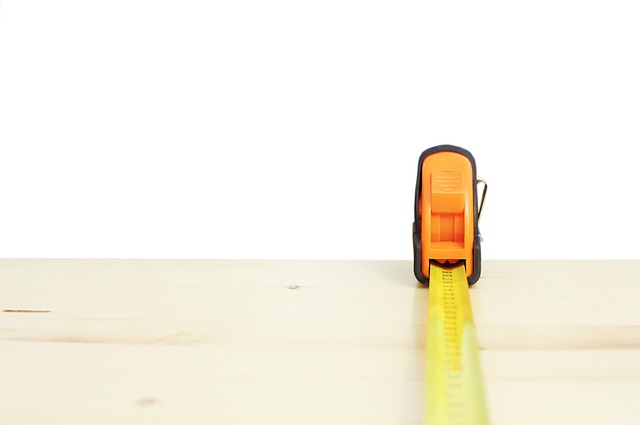
The artwork should harmonize with the style and color palette of the space, creating a cohesive and balanced look. If the furniture is modern and sleek, abstract or minimalist art can add a contemporary touch. On the other hand, traditional furniture can be complemented by landscapes or portraits with classic themes.
Accent colors in the artwork can also tie the room together, whether by matching or contrasting with the existing color scheme. By carefully selecting art that complements the furniture and accent colors, a space can truly come alive with visual interest and appeal.
Textile Choice
The choice of textiles plays a crucial role in effective interior design. When it comes to creating a visually appealing and comfortable space, the right textile selection can make all the difference. Here are four key factors to consider when choosing textiles for your interior design project:
- Window treatment: The type of fabric used for curtains or blinds can add texture, color, and style to a room. Consider the amount of sunlight you want to filter, the level of privacy required, and the overall aesthetic you want to achieve.
- Upholstery selection: The fabric used for furniture upholstery can enhance the comfort and durability of your pieces. Consider factors such as the intended use, the level of maintenance required, and the desired visual appeal.
- Texture and pattern: Textiles with interesting textures and patterns can add depth and visual interest to a space. Experiment with different textures and patterns to create a dynamic and engaging environment.
- Color coordination: Choosing textiles that complement the overall color scheme of your interior design can tie the space together and create a cohesive look. Consider the mood and atmosphere you want to create and select textiles that align with those goals.
Accessory Placement
Proper placement of accessories is crucial in achieving a well-organized and visually appealing interior design. When it comes to accessory placement, it is important to consider the design principles and the overall theme of the space.
Accessories can add personality and character to a room, but they need to be placed strategically to create balance and harmony. Start by selecting accessories that complement the style and color scheme of the room. Consider the size and scale of the accessories in relation to the furniture and other elements in the space.
Place larger accessories as focal points, such as a statement artwork or a bold vase, while smaller accessories can be grouped together for visual interest. Remember to consider the function of the room and how the accessories will enhance the overall ambiance.
Floor Planning
When considering effective interior design, careful floor planning is essential for creating a functional and visually appealing space. The layout and arrangement of furniture, as well as the choice of flooring options, play a crucial role in determining the overall flow of a room.

Here are four key considerations to keep in mind when it comes to floor planning:
- Room Flow: The way furniture is placed and the type of flooring used can greatly affect the flow of a room. It is important to ensure that there is enough space for people to move around comfortably without any obstructions.
- Furniture Placement: Placing furniture strategically can help create designated areas within a room and optimize the use of space. It is important to consider the size and scale of furniture pieces to ensure they fit well within the room.
- Flooring Options: The choice of flooring material can drastically impact the overall look and feel of a space. Whether it's hardwood, carpet, tile, or laminate, each option has its own unique characteristics that can enhance the aesthetic appeal of a room.
- Traffic Patterns: Understanding the natural traffic patterns within a space is crucial for effective floor planning. By determining the main pathways, one can arrange furniture and select flooring options that accommodate the flow of movement.
Plant Integration
To enhance the overall flow and aesthetic appeal of a well-designed space, incorporating plants into the interior design scheme is a key element to consider. Plant integration, also known as biophilic design, not only adds a touch of natural beauty but also provides numerous benefits for the occupants of the space.
Greenery integration brings the outdoors in, creating a sense of tranquility and connection with nature. Plants have been proven to improve air quality, reduce stress levels, and increase productivity. When strategically placed, they can also serve as natural dividers, creating zones within a space.
Whether it's a small potted plant on a desk or a large statement plant in a corner, the presence of greenery can transform a space, making it more inviting, refreshing, and visually pleasing.
Style Mixing
How can style mixing elevate the visual interest and sophistication of an interior design scheme?
Style blending is a powerful technique that allows designers to combine different design styles, resulting in unique and visually captivating spaces. By mixing various styles, designers can create a sense of depth and complexity, adding personality and character to a room.
Pattern mixing is another element that can be incorporated into style mixing, allowing for the combination of different patterns, textures, and colors. This technique adds visual interest and creates a dynamic and vibrant atmosphere.

The key to successful style mixing is to find a balance between the different elements, ensuring that they complement each other and create a cohesive overall design. When done right, style mixing can transform an ordinary space into a truly extraordinary one.
Frequently Asked Questions
What Are Some Tips for Finding Unique and Affordable Furniture Pieces for My Interior Design?
When searching for unique and affordable furniture pieces for your interior design, consider exploring secondhand stores, online marketplaces, and local artisan shops. These options provide a range of choices that can add character and individuality to your space without breaking the bank.
How Can I Incorporate Technology and Smart Home Features Into My Interior Design?
Incorporating technology and integrating smart home features into interior design can enhance functionality and convenience. From voice-activated assistants to automated lighting and temperature controls, these elements create a seamless and modern living space.
What Are Some Creative Ways to Incorporate Sustainable and Eco-Friendly Materials in My Interior Design?
Incorporating sustainable materials and adopting an eco-friendly design approach are key considerations for creating a visually appealing and environmentally conscious interior space. Through careful selection and innovative implementation, these elements can seamlessly blend with the overall design, enhancing both aesthetic appeal and sustainability.
How Can I Maximize Storage Space in Small Rooms Without Sacrificing Style?
To maximize storage space in small rooms without sacrificing style, consider utilizing vertical space, incorporating multifunctional furniture pieces, utilizing hidden storage solutions such as under-bed drawers or built-in shelves, and utilizing wall-mounted organizers.
Are There Any Special Considerations or Recommendations for Designing a Home Office or Workspace Within My Interior Design?
When designing a home office or workspace within an interior design, it is important to consider home office ergonomics, lighting, and color schemes. These elements contribute to a functional and visually appealing workspace that promotes productivity and well-being.